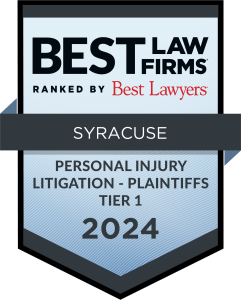
Design defects in roadways refer to flaws built into the road’s design—improper slope, missing signage, poor drainage, inadequate intersection layout, etc.—that create a hazardous condition from the start. Negligent roadway design cases differ from negligent roadway maintenance cases (allowing potholes or crumbling asphalt to exist) and are subject to different legal rules. In this post I will explain how you prove a faulty roadway design case, but will also compare such proof to the proof required for negligent roadway maintenance cases.
Legal Hurdles for Defective Roadway Design Cases
Under New York law, municipal entities enjoy qualified immunity with respect to roadway design. To overcome it, plaintiffs must show that the design had “no rational basis” or was “plainly inadequate”, or that the municipality knew of its dangers and failed to correct them in a reasonable time frame Justia+5Central New York Injury Lawyer Blog+5Reddit+5.
 Central New York Injury Lawyer Blog
Central New York Injury Lawyer Blog




















